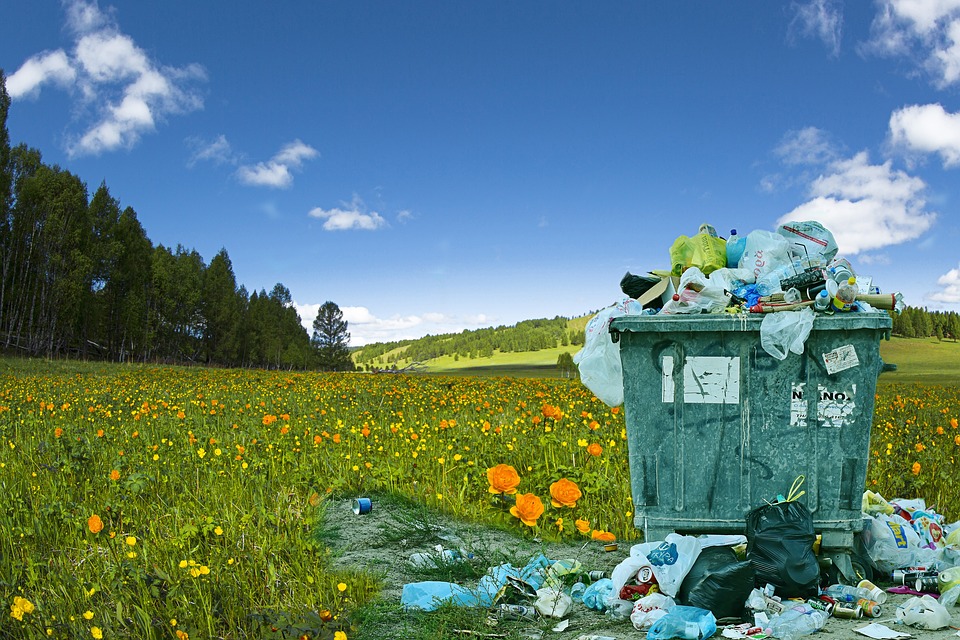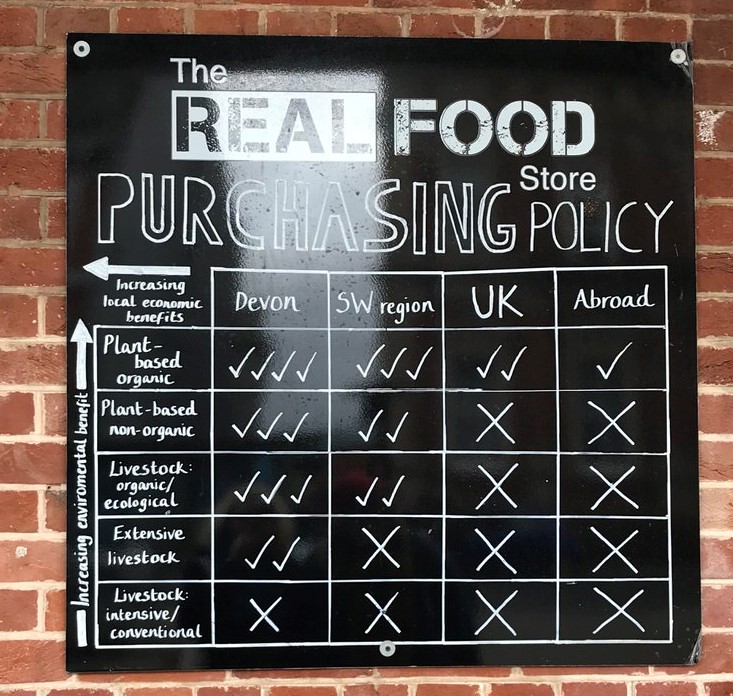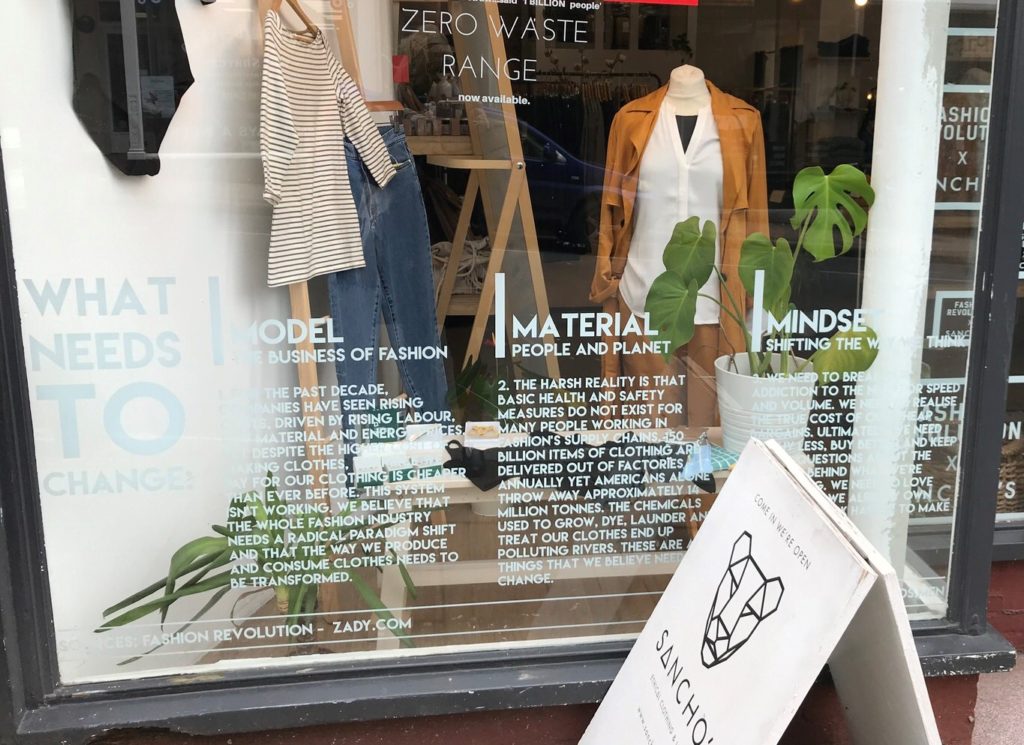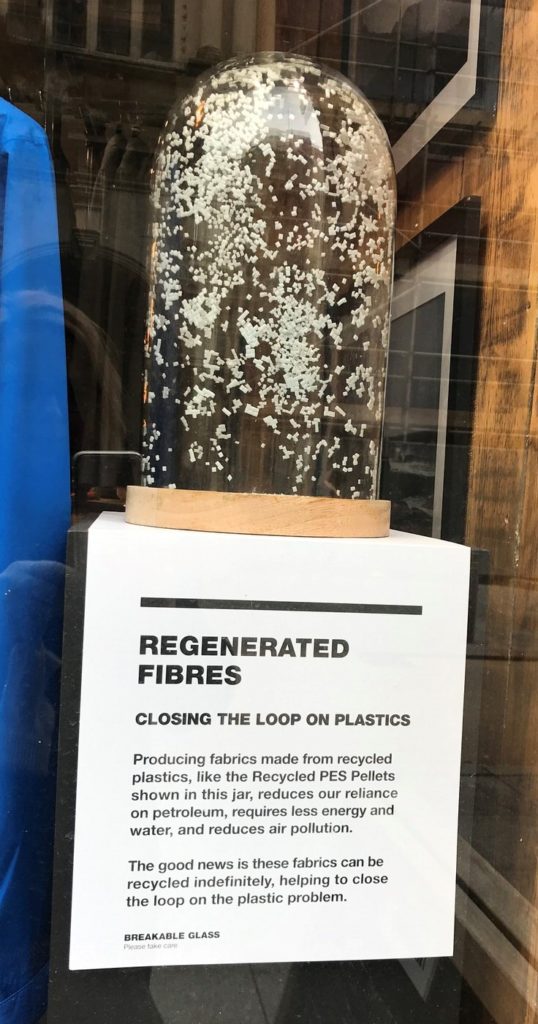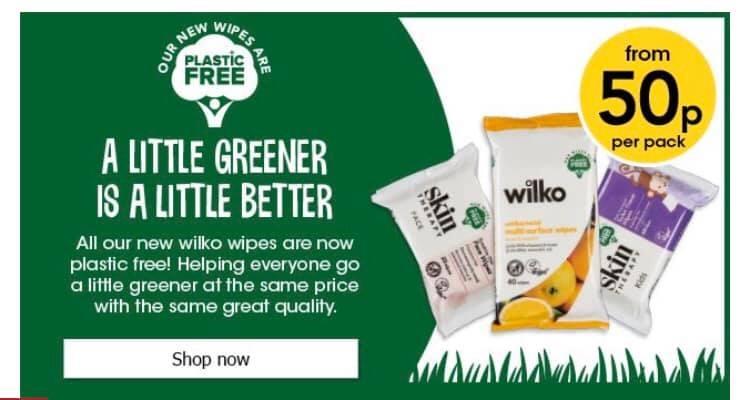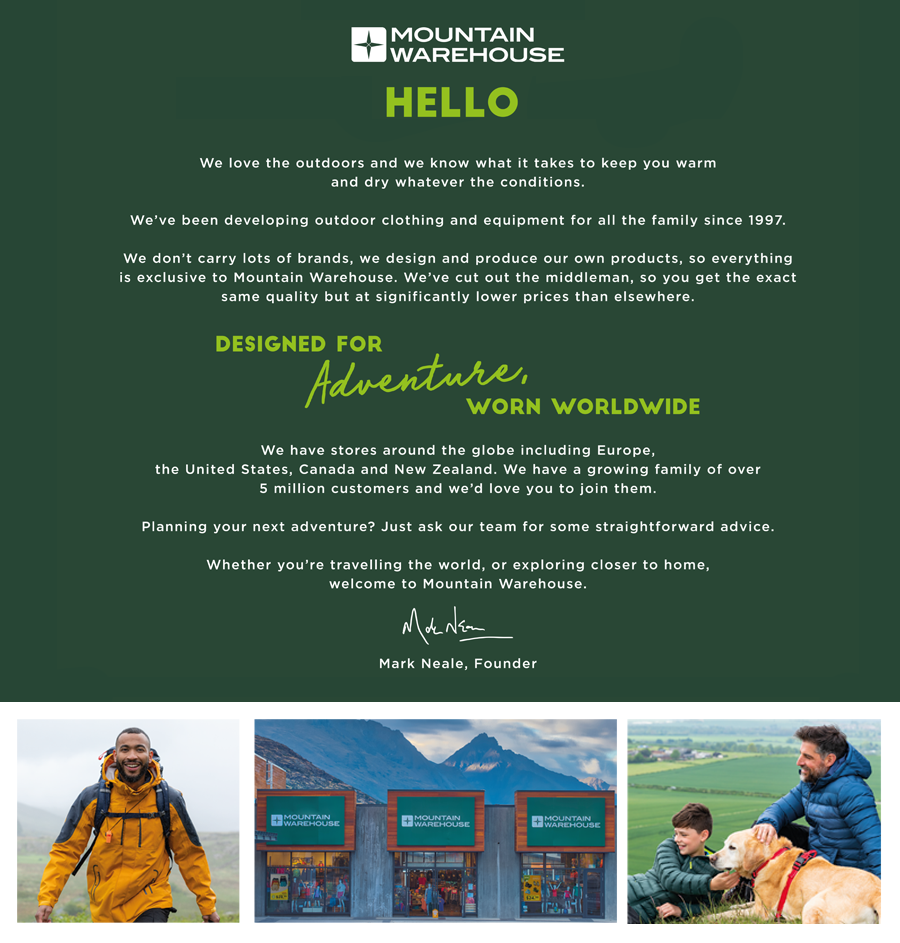Is there anyone still wondering why they might need to know what their story is about sustainability? How about:
- Online searches for “sustainable fashion” tripled between 2016 and 2019
- Nearly 4 in 10 shoppers in a European study said their top priority is that food and drink is produced in a way that doesn’t harm the environment
- In a study across 35 countries and 35,000 people, two-thirds of them make decisions about what to buy based on a company’s transparency
So, it’s important to tell the story, but it doesn’t have to be dull and worthy, nor a bad case of greenwashing. Looking around the high street recently I fou,nd some good examples from independent businesses and smaller brands as well as more established businesses. I think the smaller ones show the most flexibility and agility to tell their sustainability stories in interesting ways.
Five simple ways not to be boring
Is your story doing a good job, or sending people to sleep? Here’s five simple ways you could make them sit up and take notice.
It doesn’t have to be about lots of words
I love this sign at The Real Food Store in Exeter. It’s a simple way to show their purchasing policy, and the key benefit behind the decisions. There’s quite a lot in here but it’s easy to take in almost at a glance.
If you can, distil things down to the minimum number of words and make use of infographics. Much more likely to be read if you’re not faced with walls of text. Think of it as a conversation starter. If people are bought into the headline, then they’ll be ready to start looking for more detail.
Less is not always more
Sancho’s is a sustainable, ethical fashion brand and retailer in Exeter. Their shop window certainly has more words than The Real Food Store sign. But it puts their values front and central, with headlines that capture attention. If it’s not pouring down with rain you might stop and read further.
Or head to their website to find out more.
They’ve pulled out three key messages about what changes are needed to make fashions sustainable. I like on their website they talk about wanting to make it easier for customers to make conscious decisions about what they buy. When the whole sustainability argument seems so complicated, people can decide to do nothing as they’re not sure whether they’re doing the right thing, or if it’s worth it.
They’re still making it simple, by using the power of three points, and giving enough detail to explain, but not enough to bore.
So, how can you help customers understand where your efforts help what they can do? You can also show how and why a small change, multiplied by many people, can have a real impact.
Words AND pictures are hugely powerful
This example from Finisterre taps into the plastics issue, particularly as we get more stories about recycling not being enough. And if every bit of plastic ever made still exists, then isn’t it better that it’s doing something useful, not just sitting around in landfill?
So the display draws you in, and the words explain what and why. You might not have a physical shop window, but your content can draw on powerful imagery to help support your story.
Don’t think you have to have all the story
Anyone who says they have a zero-waste, perfectly sustainable business probably has good intentions, but it’s unlikely to be the whole truth. Like the complex issue of plastic bags versus paper, or cotton tote bags. Sustainability is a complex subject, and pretty much every business is on a “journey”.
That’s one of the reasons I like this from wilko. Declaration to make, I worked with wilko on some of this, so know some of the debates that went on. I’ve also had the same debate with other retailers and brands where there’s a reticence to talk about what they’re doing because they’ve not been able to do everything yet.
I think that saying nothing is not an option. Customer will assume you’re doing nothing at all, so it’s better to share what you have been able to do. You could go as far as talking about what you want to do better.
Why?
Because it’s the same thing for your customers. Very few of us are living perfectly sustainable lives yet, but many have the intent to do their bit. You just need to make it simple for people to make an improvement. So yes, wilko could have taken out all wipes, and told people to get busy with white vinegar and bicarb (which they also offer).
But all that does is move the customer to buy from another brand, who might not have taken even this step of making the wipe plastic-free. If you only demand that people completely change their behaviour, then it’s going to take change longer to embed. Make a small step easy, and they might come with you, and trust with whatever the next step is.
Make the words and actions match
You would think that a business that professes to love the outdoors would be doing everything to keep the planet in tip-top shape?
So it always surprises me that Mountain Warehouse insists (according to the staff I asked ) that the front doors are always open, even when the temperature outdoor is in single digits or below. Needless to say, the heating is on full blast.
And yet if I walk down the street I’ll find many shops with polite notices on the door to say they are open, they’re just conserving energy. They don’t necessarily profess to love the outdoors. But their actions tell a story.
As do Mountain Warehouse’s.
Be authentic. Be consistent. Be honest. And don’t greenwash. It won’t wash, at any temperature.
Five actions to keep people awake as you tell your sustainability story
As you approach your sustainability story, keep these 5 things in mind:
- It doesn’t have to be about lots of words
- Less is not always more
- Words AND pictures are hugely powerful
- Don’t think you have to have all the story
- Make sure the words and actions match
Who do you think is doing a great job on this front? Love to know if you’ve spotted any good examples, drop me a comment below.
Additional reading
If you’re interested in this topic, then you might enjoy this piece on six companies accused of greenwashing their stories. I also enjoyed this piece on doing what you can in challenging times.
